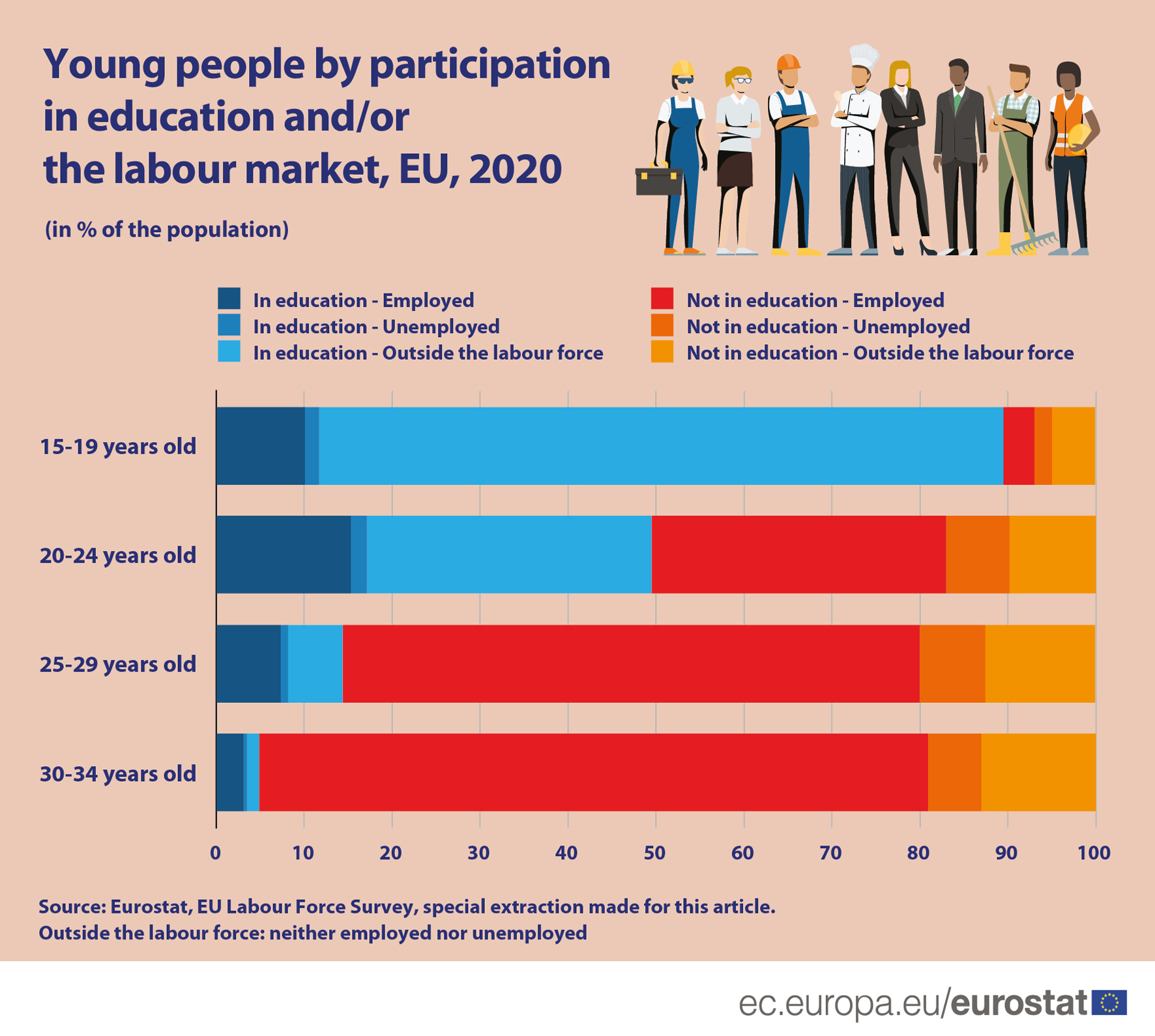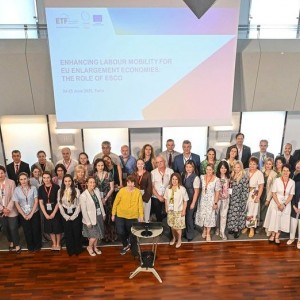Eurostat: Young people in education and the labour market in 2020

In 2020, in the EU, 9 in 10 people aged 15-19 years were still in education (89.5%). The older the age group, the smaller the proportion of young people in education: 49.5% of people aged 20-24 years, 14.4% of people aged 25-29 years and 4.8% of those aged 30-34 years were in education in 2020.
Share of employment among students: highest in the Netherlands and lowest in Slovakia and Romania
The pace of transition from school to the labour market varies across EU Member States, due to the influence of national systems of education and training, as well as other factors including national labour market characteristics and cultural determinants. In some countries, young people start working much earlier than in others, e.g. in the form of student jobs or paid traineeships.
In 2020, 18.4 % of people aged between 15-24 years in the EU were in education and at the same time employed, while 2.5% of the same age group were in education but unemployed, looking for a job while studying.
When compared with 2019, the number of people aged between 15-24 years who were in education and employed at the same time decreased by 3% (from 6.1 million in 2019 to 5.9 million in 2020). Meanwhile, the number of people aged between 15-24 years in education and unemployed at the same time increased by 16% (from 0.7 million in 2019 to 0.8 million in 2020).
Among the EU Member States, the Netherlands had the highest share of pupils and students aged between 15-24 years that were employed while still in education in 2020 (57.8%), followed by Denmark (45.8%), Germany (38.7%) and Austria (35.2 %). In contrast, the lowest shares of employment among pupils and students aged 15-24 were found in Croatia and Hungary (both 3.3%), Italy (3.0%), Slovakia and Romania (both 2.5%).
The highest share of pupils and students aged 15-24 who were unemployed (meaning that they were looking for a job and ready to start to work while studying) was recorded in Sweden (12.1%), followed by Finland (9.5%), Denmark and the Netherlands (both 6.3%). On the other hand, in Slovenia, Italy, Romania, Czechia and Croatia, less than 1% of pupils and students in that age group were unemployed.
Read the full text HERE
Source: ec.europa.eu/eurostat


